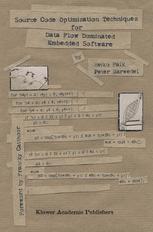

Most ebook files are in PDF format, so you can easily read them using various software such as Foxit Reader or directly on the Google Chrome browser.
Some ebook files are released by publishers in other formats such as .awz, .mobi, .epub, .fb2, etc. You may need to install specific software to read these formats on mobile/PC, such as Calibre.
Please read the tutorial at this link: https://ebookbell.com/faq
We offer FREE conversion to the popular formats you request; however, this may take some time. Therefore, right after payment, please email us, and we will try to provide the service as quickly as possible.
For some exceptional file formats or broken links (if any), please refrain from opening any disputes. Instead, email us first, and we will try to assist within a maximum of 6 hours.
EbookBell Team

4.4
32 reviewsThis book focuses on source-to-source code transformations that remove addressing-related overhead present in most multimedia or signal processing application programs. This approach is complementary to existing compiler technology. What is particularly attractive about the transformation flow pre sented here is that its behavior is nearly independent of the target processor platform and the underlying compiler. Hence, the different source code trans formations developed here lead to impressive performance improvements on most existing processor architecture styles, ranging from RISCs like ARM7 or MIPS over Superscalars like Intel-Pentium, PowerPC, DEC-Alpha, Sun and HP, to VLIW DSPs like TI C6x and Philips TriMedia. The source code did not have to be modified between processors to obtain these results. Apart from the performance improvements, the estimated energy is also significantly reduced for a given application run. These results were not obtained for academic codes but for realistic and rep resentative applications, all selected from the multimedia domain. That shows the industrial relevance and importance of this research. At the same time, the scientific novelty and quality of the contributions have lead to several excellent papers that have been published in internationally renowned conferences like e. g. DATE. This book is hence of interest for academic researchers, both because of the overall description of the methodology and related work context and for the detailed descriptions of the compilation techniques and algorithms.